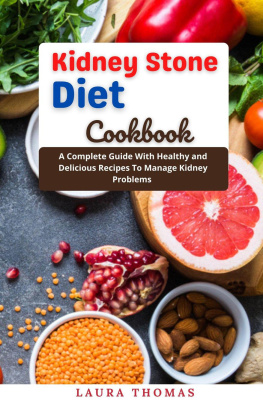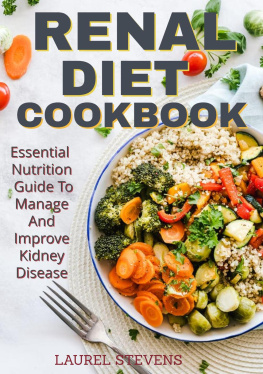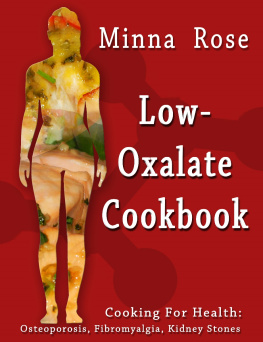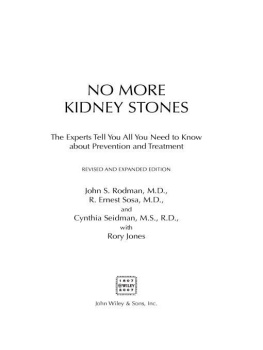Evan R. Goldfischer, MD, MBA, CPI, CPE
Copyright Evan R. Goldfischer, MD, MBA, CPI, CPE, 2018
All rights reserved. No part of this publication may be reproduced, stored or transmitted in any form or by any means, electronic, mechanical, photocopying, recording, scanning, or otherwise without written permission from the publisher. It is illegal to copy this book, post it to a website, or distribute it by any other means without permission.
Editing by Tracie Gipson, Dr. John Asplin, Lorraine O'Donnell, and Amy Effron
To Julie, Sabrina, and Gigi... the true loves of my life.
There is an undeniable charm if a physician has had the very disease he chooses to write about for a public as opposed to a medical audience. Part of the charm, of course, is the willingness to put off the cloak of a profession and speak as a common victim of this nasty and painful disease. But perhaps a bigger part is that professional expertise here at a very high level has been shall I say enlightened by personal experience.
The author is an experienced and highly skilled surgeon with a vast experience in kidney stone management. Perhaps more than most surgeons he has pursued kidney stone prevention for his patients, a task not rarely slighted in the fast paced life of clinical practice. I have read many books intended to help patients, and this one strikes me as fine indeed, for its thoughtful advice, clear grasp of what patients need to know, and if I may say considerable charm.
My Personal Agony of the Stones
It is said that there are only a few things more painful than childbirth and having a kidney stone is one of them. The pain from kidney stones is known to bring macho, grown men to their knees. I should know, because it happened to me.
I love street food. Im usually careful about what I eat and always make sure the street food is cooked through, before I sample it. So, when I found tea-smoked duck on my trip to Thailand, Bangkok, I had to try it. It was absolutely delicious, but on the way back to the hotel, I started to feel a little achy, my stomach began to rumble and I broke out into a feverish sweat. Im sure you know what happened next. I headed straight to the bathroom and, for the next 12 hours I experienced the worst, most explosive diarrhea I have ever had.
The next morning, thankfully, my fever broke, and I headed to the airport to return to the States. As a doctor, I knew to stay hydrated during this horrific bout of food poisoning, but every time I drank something it passed right through me. As I was also traveling, I feared drinking anything potentially harmful, so I ceased drinking all liquids. I just wanted to get home from Bangkok without another bathroom incident. So, by the time I got on the plane I was already dehydrated, and the dry air in the airplane made my situation even worse.
I was back at work the next day when, right in the middle of a surgical procedure I was performing on a patient, I felt a tremendous amount of pain in my side, between my ribs and my hips (otherwise known as the flank area) that radiated all the way down to my groin. It was so excruciating that I collapsed right on the operating room floor. I was operating with a partner, who called in another surgeon to complete the patients surgery, while I was rushed to the emergency room by my nurses. I went to the bathroom, saw that there was blood in my urine and immediately suspected that I may have a kidney stone, which is also called a renal calculus. The CAT scan confirmed that, indeed, I had a three millimeter kidney stone lodged in my ureter about a centimeter from my bladder (you will understand these medical terms in chapter two). This tiny stoneabout the size of a jewelry beadacted like a cork and blocked my urine from my kidney, resulting in agonizing pain.
I had the most common type of kidney stonea calcium stone. It was most likely caused by dehydration, which came from the food poisoning in Bangkok. Being a physician, and one who specializes in the diagnosis and treatment of kidney stones, I knew I had about a 70 percent chance of passing it which means peeing it out so I took some pain killers to ease the pain, drank a lot of water, and played the waiting game. That night, I had orchestra seat tickets to the opera, Madame Butterfly, that I did not want to miss. At the end of the first act, after the soprano hit a high C note (it did not crack glass, but maybe it cracked my stone!), I went to the bathroom, passed the stone and returned to my seat to enjoy the rest of the performance.
A few years later, I went through my second bout of kidney stones. Again, it happened because I was dehydrated. (Physician heal thyself!) I learned my lesson big time and since I am now at risk for yet another kidney stone, I know that, no matter my circumstance, I need to stay well hydrated at all times. And I do. On any given daywhether Im seeing patients or travelingyou will find me with a bottle of water at my side.
If you are in the chronic phase of having kidney stones, it means that you have already passed the stone and/or that pain has temporarily subsided. Now you are reading this book hoping for information on how to reduce the chance that this will happen again (and again...). You have come to the right place. This book is the map you need to get you from kidney stone to treatment to prevention.
Think about this: If your doctor diagnosed you with another medical condition other than kidney stones, such as diabetes or heart disease, you would probably do what you could to learn about it and, hopefully, make lifestyle changes to stay healthy and avoid any setbacks. If your doctor told you that you needed to lose weight because you were at risk of suffering a massive heart attack, you, hopefully learn what you needed to do to drop a few pounds. Being diagnosed with chronic kidney stones is no different. You have been diagnosed with a lifelongyes, lifelongcondition that you now have to learn live with.
This book not only shows you what you need to know about having kidney stones, from diagnosis to treatment, it also shows you various lifestyle changes you can make to reduce your risk of going through this hell again. This is, extremely, important because the more kidney stones you have, the higher the risk of developing kidney disease, so reducing your chances of kidney stones, also ,reduces your chances of developing chronic kidney disease later in life.
If you really, truly do not want to experience this pain again, it is important that you review the guidelines and information in this book. I will show you the difference between the four major types of kidney stones, why they happen, how they can be removed and what to eat and drink to prevent them from forming again. Please understand that this book is not intended to be a scientific reference for clinicians, but rather a guide for patients, and is not intended to be a substitute for a consultation with a physician with an expertise in kidney stone disease.
Interestingly, kidney stones are even mentioned in the Hippocratic Oath that we, as doctors, take. It states: I will not cut for the stone, but leave that to the practitioners of the craft.
Evan R. Goldfischer,MD, MBA
Pleasant Valley, New York
November 2017






